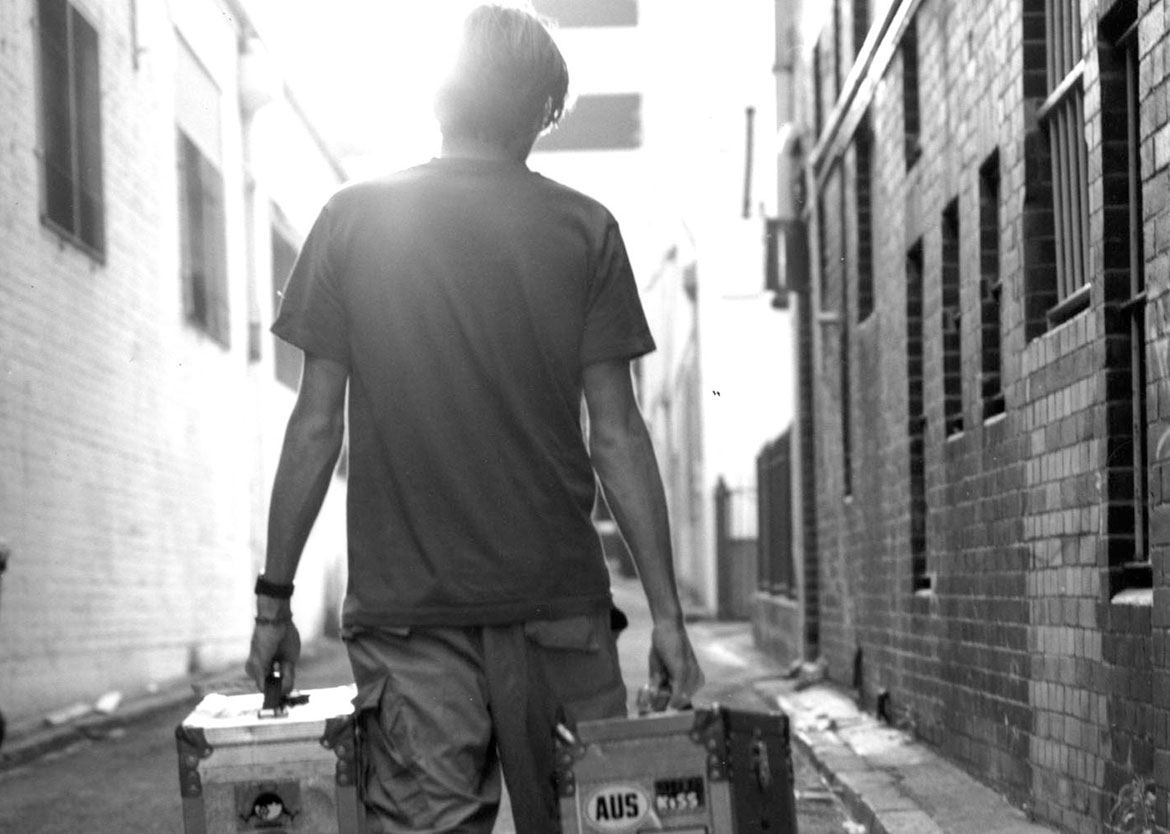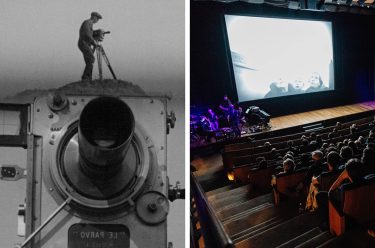Following on from the Rave film program that recently screened at the Australian Cinémathèque and in time for Record Store Day on 12 June, Brisbane-based musician and DJ, Phil Smart reflects on his experience of the rave scene and its connection to film and pop culture.

When you’re part of a subculture, it’s not often that you get to see it depicted on the big screen, so it’s great to see how many films dedicated to rave culture have been made. The diverse selection of international films is a testament to the long lasting and far-reaching legacy of a movement that continues to have a global impact.
Raves provided people with somewhere to escape from the everyday for a few hours. It was also a place for those looking for community and acceptance in an environment that lived by a credo of peace, love, unity and respect where individuals could unite on the dancefloor. It was an optimistic time when we thought we could change the world, and in some ways we did.
It was also inherently political, in part a reaction to the neo-conservatism and economic realities of Thatcherite Britain as well as a continuation of the punk movement’s DIY attitude and democratisation of culture creation. We were setting up temporary autonomous zones, where we could be free to enjoy and express ourselves.
The origins of the rave scene were a uniquely British phenomenon as shown in the film Everybody In The Place 2018 directed by Jeremy Deller and were a result of the weaving together of numerous cultural threads. The musical philosophy was originally inspired by the discotheques of Ibiza and became increasingly infused with house and techno music from the underground scenes in Chicago, New York, Detroit and Germany. This led to the eventual spawning of countless genres and sub-genres, including drum and bass, dubstep and tech house.
DELVE DEEPER: 5 Films To Rave About – Sound Systems, Acid-House And The Yellow Smiley
RELATED: 5 film suggestions to watch
Everybody in the Place 2018 / Director: Jeremy Deller
Once established, the scene quickly began to spread and take hold around the globe. It’s not widely known that Sydney was one of the first genuine rave scenes to establish itself outside the UK, with thousands of British backpackers arriving in the city every year, importing the culture in a direct lineage from the streets and fields of England to the empty warehouses of Alexandria.
Another place that had an early rave scene heavily influenced by British ex-pats, and somewhere I also spent a lot of time DJing, was San Francisco, wonderfully and authentically portrayed in the film Groove 2000, directed by Greg Harrison. Here, the rave scene absorbed elements of the city’s history as the epicentre of the psychedelic revolution of the late 60s, in some ways completing a cultural circle as demonstrated in the film A Life In Waves 2017, directed by Brett Whitcomb.
Groove 2000 / Director: Greg Harrison
A Life in Waves 2017 / Director: Brett Whitcomb
Fast forward to now, and the culture has evolved into a global nightclub and festival scene. Films such as Raving Iran 2016 directed by Sue Meures, demonstrate that the desire to dance, listen to music and find community with other like-minded people is universal and powerful.
As a DJ, whose job it is to make people dance, it’s been interesting to watch and listen to how people have dealt with the bans on dancing and gatherings over the past year. Playing in Sydney on the last weekend before the lifting of the ban on dancing, the security guards were having a hard time stopping people from busting moves on the dancefloor; the urge to dance was close to unstoppable. The spirit of rave is still with us, and it’s resilient and adaptive.
Phil Smart has been a fixture on the Australian electronic music scene for over 30 years.
Raving Iran 2016 / Director: Sue Meures
Dip into our Cinema blogs / View the ongoing Australian Cinémathèque program
The Rave cinema program (30 January until 10 March 2021) explored the rave scene as a site of connection, release and transformation. Born out of Chicago’s post-disco underground club scene in the late 1980s, rave counterculture continues to be a significant global movement, providing a space of liberation for repressed and marginalised communities. In periods of radical social, political and economic change, raves are energy-filled zones of autonomy that offer alternative spaces of freedom, hope and unity.
QAGOMA is the only Australian art gallery with purpose-built facilities dedicated to film and the moving image. The Australian Cinémathèque at the Gallery of Modern Art (GOMA) provides an ongoing program of film and video that you’re unlikely to see elsewhere, offering a rich and diverse experience of the moving image, showcasing the work of influential filmmakers and international cinema, rare 35mm prints, recent restorations and silent films with live musical accompaniment on the Gallery’s Wurlitzer organ originally installed in Brisbane’s Regent Theatre in November 1929.
Featured images: Phil Smart
#QAGOMA #RSD2021


